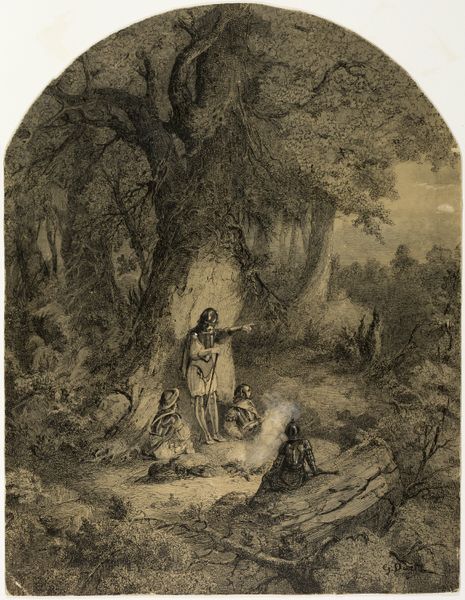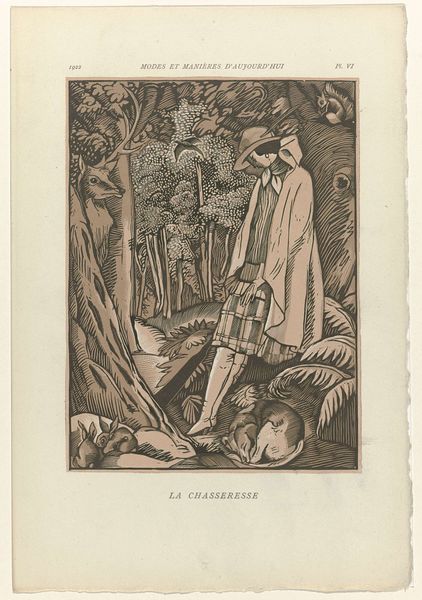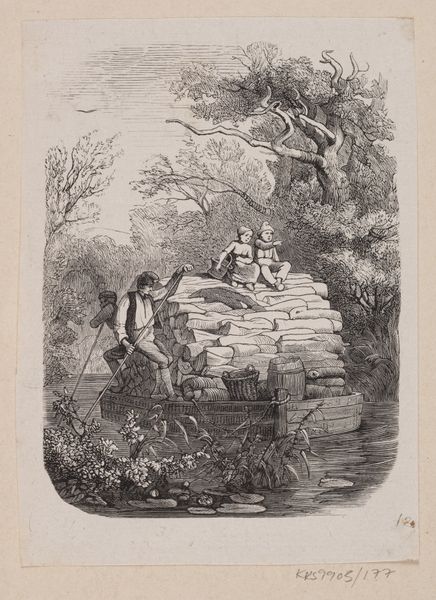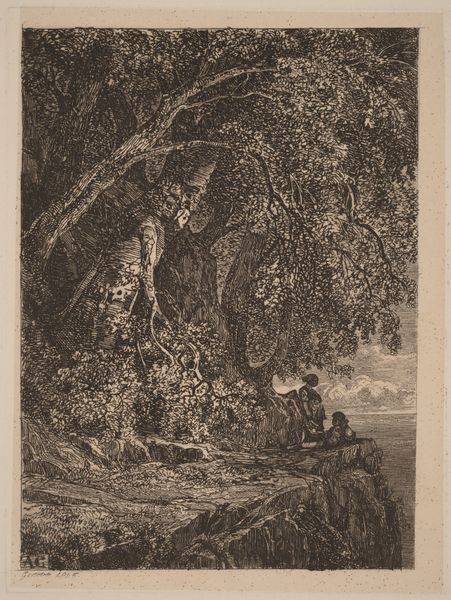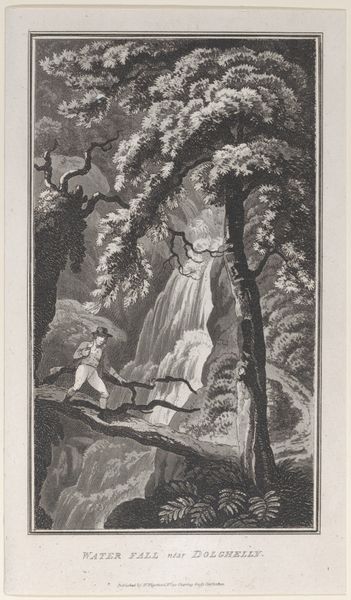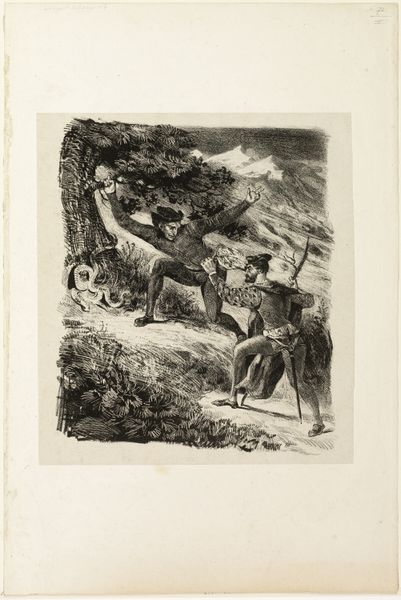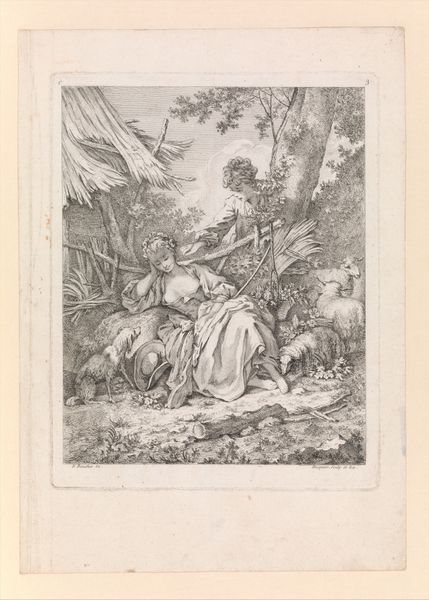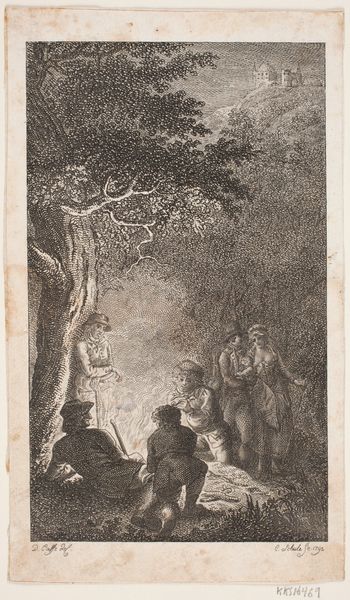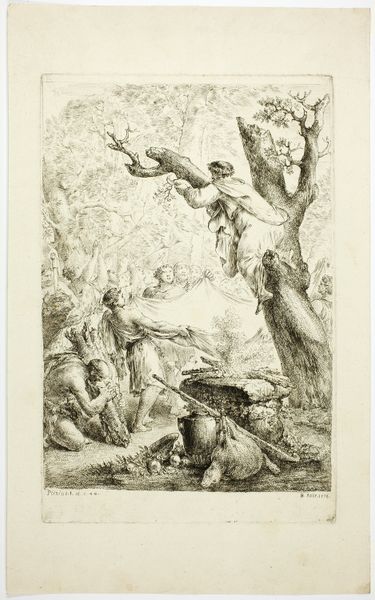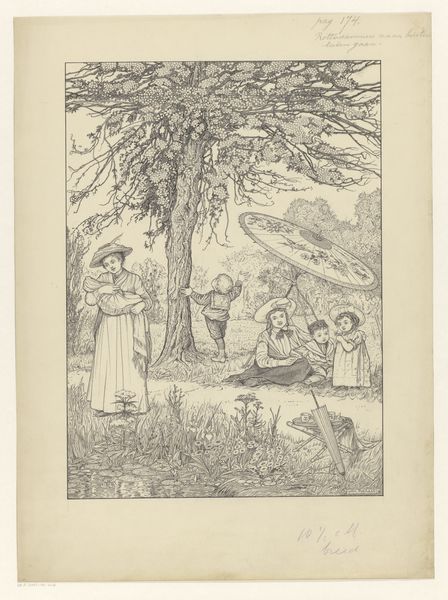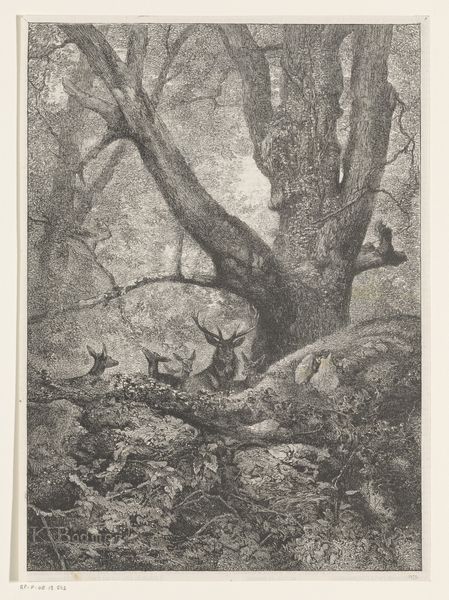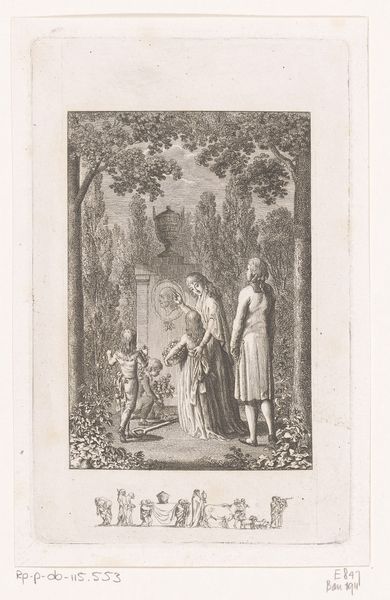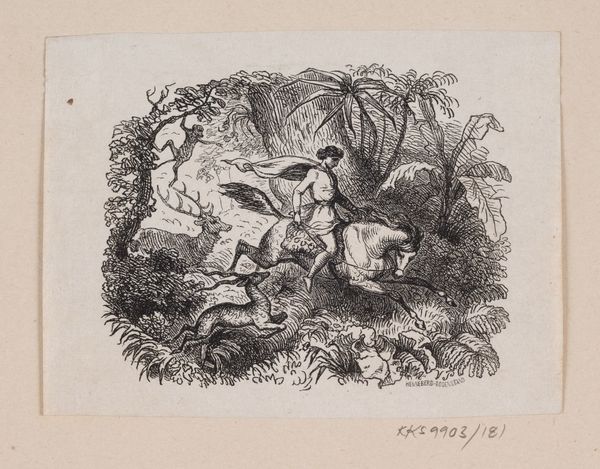
drawing, ink
#
drawing
#
narrative-art
#
landscape
#
ink
Dimensions: height 208 mm, width 139 mm
Copyright: Rijks Museum: Open Domain
Editor: This is "Gezelschap trekt door een landschap" - "Company Traipsing Through a Landscape" – by Willem Wenckebach, made before 1895. It's a drawing done with ink and held at the Rijksmuseum. It strikes me as quite illustrative, almost like a page torn from an adventure novel. What's your take on it? Curator: The level of detail is compelling. Think about the tools Wenckebach would have employed. Fine nibs, various inks perhaps, each affecting the weight and tone of the line. What was the availability of paper like for an artist such as Wenckebach in the late 19th century? The physical act of making is central. Editor: So, beyond the landscape, you're more drawn to the physical production of the piece? Curator: Absolutely. The contrast between the wildness of the depicted landscape and the controlled lines of the drawing itself. How does Wenckebach's access to, and manipulation of, materials mediate our experience of "nature"? The labour involved to generate the narrative and convey atmosphere, that's what I find compelling. Editor: I never really considered that aspect before. The making of art as a kind of labour… Curator: Exactly. Art isn’t just conjured from thin air; it’s a product of specific tools, labor, and social circumstances. Consider who had access to creating art at this time. Who owned the means of production? Editor: Good point. It adds another layer to understanding the piece. It’s fascinating to consider art through that lens, particularly when so much emphasis is put on the "vision" of the artist. Curator: Right, the Romanticized view of the artist is challenged when we bring the socio-economic realities into play. Now you start to examine the impact of industrialization on access to the tools and materials with which to produce drawings of this type. Editor: I’ll definitely be looking at art differently now. It's exciting to connect art to broader economic and social trends. Curator: It's a lens that provides depth, a way of understanding how material conditions shape creative expression.
Comments
No comments
Be the first to comment and join the conversation on the ultimate creative platform.
